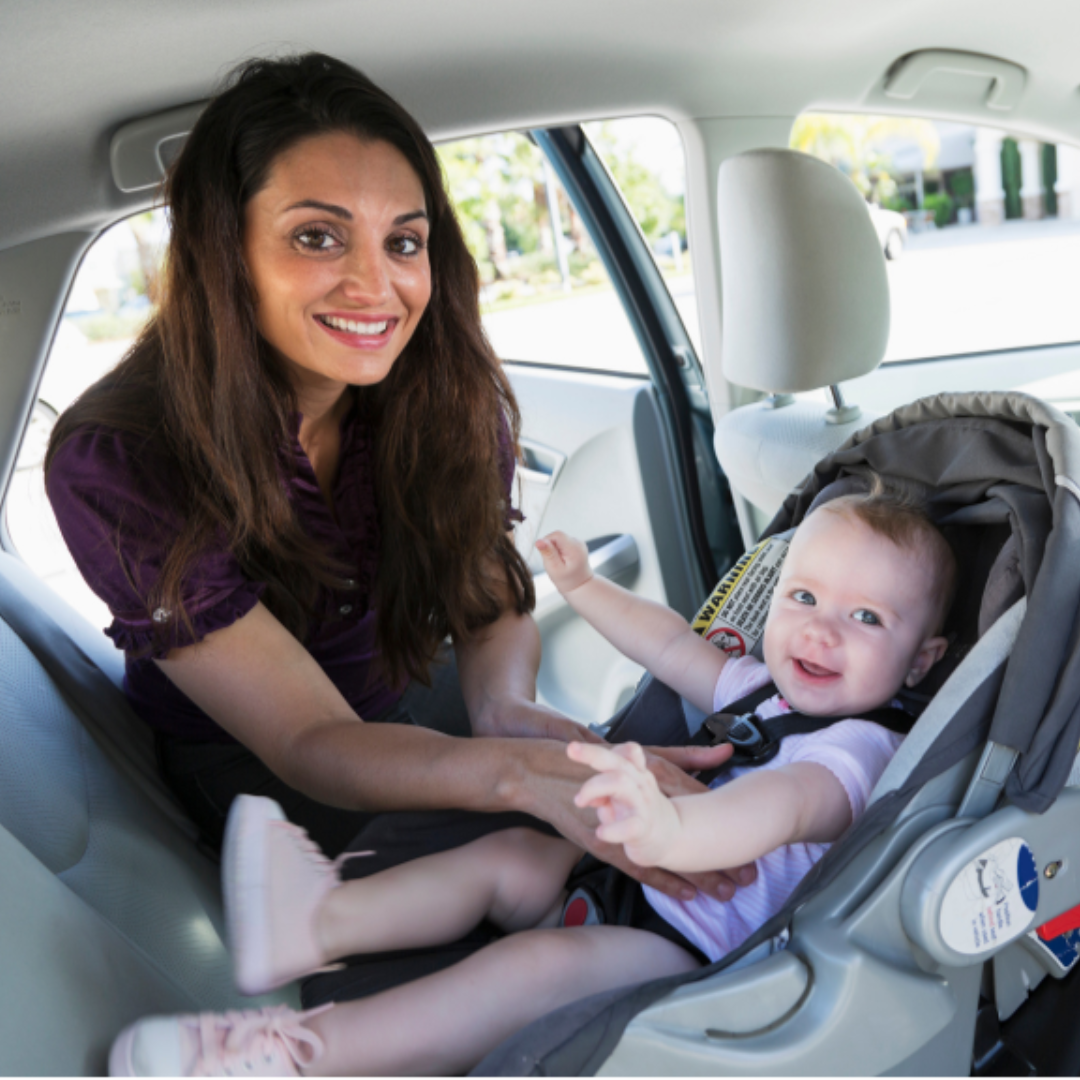Let’s talk about safety. Specifically, road safety. Have you ever been on the road and seen children and babies riding pillion on a motorbike with no helmet and no safety gear whatsoever? Or children and babies in the passenger seat of a car, not strapped in? Unfortunately, this is a very common sight in Malaysia, and this results in too many instances of injury and death in the event of an accident.
A Child Restraint System (CRS) is a seat designed to be used in cars for the safety of children. When installed correctly, the use of a CRS has been shown to reduce the risk of severe injury by 71%, and the risk of death by 28%. In Malaysia, out of all the casualties involving children ages 1-4, 43.8% of those were children being transported in private vehicles, and for ages 5-9 it was 30.2%. That’s a lot of percents when we’re talking about the safety and wellbeing of our little ones.
So, what happens if you don’t use a CRS and you get into an accident? Your child could sustain severe injuries, and if they are not restrained correctly may be thrown out of the vehicle from the force of the accident. Especially if they’re sitting in the front seat, or in the middle of the back seat. What about using regular seatbelts? Well, regular seatbelts are designed for adults, and are not suitable for the smaller, more fragile bodies of children. Using a regular seatbelt may cause serious internal injuries in the event of an accident.
The use of CRS is not yet widespread in Malaysia. This is due to a lack of awareness on the benefits and risks regarding the usage of it. The law implementing compulsory use of CRS in private vehicles only came into effect on the 1st of January 2020. It states that CRS used in Malaysia must comply with UNR standards (R44 and R129), and must be used by children who weigh less than 36kg, or with a height less than 136cm, or are aged below 12 years old. The law does not apply for use of public transport vehicles such as Grab and taxis. Larger families are exempt from this rule on the basis of not having enough space in a vehicle to install the appropriate number of CRS (for example, families with more than 3 children).
Here’s a quick glance at the CRS laws in Malaysia:
- CRS used in Malaysia have to be certified under the United Nations Regulations UN R44 and UN R129.
- All children from newborn to age 12, up to 36kgs, or below 136cm, have to be in an appropriate CRS when travelling in private vehicles.
- Any CRS must be installed with either the car’s 3-point seatbelt, or the isofix anchorage system. You cannot use the 2 point or lap belt to install a car seat.
- CRS that are rear facing cannot be installed in the front passenger seat if there is an active air bag.
Here are some things you should consider when buying a CRS:
- Your child’s weight, height and age. Refer to the weight and height first, before age.
- What you want out of the CRS. There are many different kinds, some that can grow with your child, some that are only up to a certain weight/height/age but that are easier and lighter to bring around for travelling, some that can be used in a travel system with a stroller. Consider your needs before you buy one
- The type of anchorage that your car has will impact the installation. For example, not all cars have isofix.
CRS are not cheap, but they are a worthy investment for the safety of your child. If you are on a budget, you can consider:
- Buying from baby stores during sales
- Baby expos
- Secondhand from Carousell/Facebook Marketplace/other online groups. Just make sure they are in good condition and have never been in an accident before.
- Look out for government subsidies. In 2022, those in the B40 group could apply for a subsidy of 50% up to a maximum of RM300.
Let's start making road safety a priority when bringing out our little ones, and for ourselves too! Make sure you strap your babies in safely and strap on your own seatbelt. Drive safe, Mamas!

